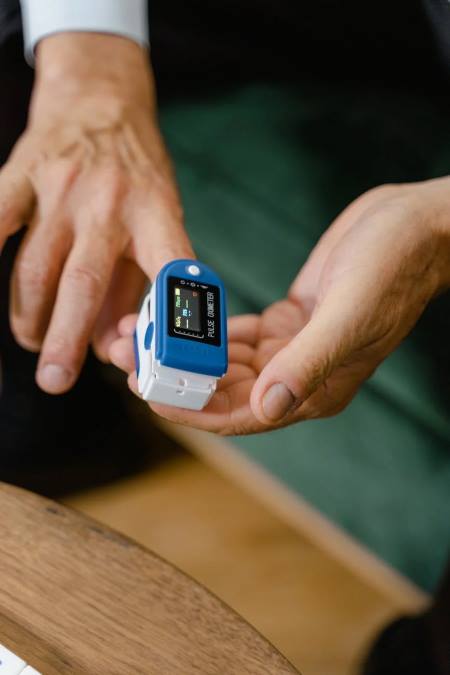
Telehealth is a rapidly growing technology in the health space, providing solutions for medical offices. The internet has enabled these technological advances through its widespread availability along with all sorts of other inventions.
The evolution from paper to electronic records may have seemed like an unnatural progression, but it hasn’t changed how patients are being cared for by physicians one bit!.
We now take advantage of technology on an everyday basis through instant messaging, emailing your doctor’s office about what prescription you need refills for, not to mention self-diagnosing tools such as WebMD or online symptom checkers; they’re game-changers too because most people don’t have to leave the comforts of their homes to get medical services.
There are many sources now available to the public and most of these sources allow for connectivity with patients, doctors, nurses, medical professionals, and pharmacy professionals.
Telemedicine offers an option to extend services to the home, Telepharmacy can offer access to medication through electronic means along with different types of monitoring such as blood pressure or glucose levels. Telemedicine also allows for consults from Telepsychiatrists via video/audio conferencing.
Who are the current telehealth providers in Canada?
The current and top telehealth providers in Canada include;
- Akira: Akira Health members can access direct secure medical consults with knowledgeable, friendly clinicians to get the help they need 24/7. This is available in French and English, so it’s perfect for Canadians who need help when they’re far from home or have limited mobility.
- Maple: Maple has made life that much simpler for Canadians. With just a few clicks, one can book an appointment with their desired doctor and get straightforward answers to any questions they might have.
- Dialogue: This is one of the leading telehealth companies globally and the number one provider in Canada. It believes that no one should settle when it comes to their health, so it had been working hard for years building a platform with everything patients need – care from expert doctors delivered by skilled nurses at their convenience on any device including its website or app!.
- GOevisit: This is a trusted virtual care delivery service that makes it easy to access medical practitioners from anywhere. This innovative and secure platform can be accessed on any mobile device, so patients never need to miss an appointment again.
- Wello: Wello is a healthcare company that has been in the industry for over 41 years, and they specialize in coordinating care by building strong relationships with their patients. They are proactive about managing each step of your patient’s journey to ensure quality outcomes.
What are the requirements to integrate telehealth in Canada?
Medical practice in Canada is unlike the practice in other countries in the world. This is why Telehealth professionals must understand these requirements before integrating Telehealth in their provinces.
The first hurdle for the physician to overcome is whether or not the physician can provide telemedicine to potential patients outside of the province or territory in which the physician is licensed. Physicians can only practice in the province or territory where they have a license. As a result, if patients and physicians are in different jurisdictions, physicians must ensure that telemedicine is legal in the patient’s jurisdiction. Most jurisdictions require physicians who practice outside their jurisdiction to meet the licensing or registration requirements of the jurisdiction in which the patient resides.
Physicians must have the necessary training and competency to manage patient care via telemedicine because it is such a new field. They also need to ensure they are following all ethical and legal requirements and gaining consent from their patients on an in-person level before treating them remotely for anything more serious than simple colds or coughs. For physicians who practice this type of medicine to be confident in what they do, both parties should know each other’s identity so that there are no issues with confidentiality being breached if something happens during treatment exchange between doctor and patient.
Another challenge for telemedicine is ensuring that it accurately assesses the patient’s presenting problem. As with an in-person visit, the physician must provide an appropriate medical assessment of the patient based on the patient’s symptoms or condition, the patient’s history, medications the patient is taking, and the limitations of telemedicine. The physician must inform the patient about the appropriateness, limitations, and privacy concerns associated with telemedicine. If the physician is unable to do so, he or she must make arrangements for a timely in-person assessment.
Benefits of Telehealth

Telehealth has been a blessing to doctors and their patients, for it provides an easy fix when the next doctor’s visit is not close. It saves time by eliminating long trips into town or waiting rooms at other hospitals. The pros of Telehealth are many: comfort and convenience, reduced viral rates because there is no chance of physical contact with another person suffering from infectious diseases like Ebola virus disease (EVD) which cause vomiting, diarrhea, etc., increased access to healthcare practitioners/doctors but also lowers costs due to virtual appointments that can be scheduled during off-peak hours without incurring any additional expenses such as parking fees.
Also, some specialty practitioners may benefit from telemedicine because they can see patients in their home environment. Allergists, for example, may be able to identify triggers in the environment of patients that cause allergies. Neurologists, physical and occupational therapists, and others can observe patients and assess their ability to navigate and care for themselves at home.
Telemedicine can allow homebound patients to become more self-sufficient, as well. Specialists like allergists and occupational therapists may be able to identify triggers that cause allergy or physical disability in their patient’s environment, respectively. This feedback will help these specialists develop a better treatment plan for the future care of the person at home.
Privacy concerns and PIPEDA compliance
While Telehealth presents a great advantage to patients and medical practitioners, there lie some risks with having patients’ information on the Internet. The major risk is a cyber attack.
Also, all Telehealth companies must ensure that they are PIPEDA compliant. PIPEDA applies to companies in the private sector of Canada. It applies to companies that collect, use or disclose personal information in the course of commercial activity. These companies must be able to follow PIPEDA’s 10 fair information principles designed for the collection, use, and disclosure of personal information, as well as providing access to personal information.
Telehealth companies can take some security measures to beef up their security such as
- Peer-to-Peer Communication: This simply means that communication is strictly between the Practitioner and the patient.
- End-to-End Encryption: This ensures that data shared between the patient and the practitioner is secure.
Staff Training Process for Telehealth Companies
This is one of the most crucial steps to setting up a telehealth company. Before setting up a telehealth company, it is important to take members of staff through courses that will be beneficial to the company and themselves. These courses include:
- Telephone Triage
- Telemedicine: Virtual Visits with Patients
- Best Practices for Delivering Telehealth
- Implementing Guidelines for Telehealth Practitioners
- Telehealth in Clinical Practice.
Also, Members of staff should be aware of the best Telemedicine practices including Technology Testing, Adequate Lightning, and Camera placement.
Hardware requirements for Telehealth Companies

If you planning to integrate Telehealth into your medical facility, it is imperative to have the following hardware requirements which include:
- A Secure Internet Connection: A broadband of 50-100 megabits per second will do just fine
- A Video Platform: There are two types basically-those that allow the patient to meet with their provider from their own home and those that require that a patient be seen virtually at a remote healthcare site such as a pharmacy.
- Adequate Tech Support: Tech supports are needed if problems arise with the software or hardware.
- Video Recording Capabilities: This is needed for documentation of visits.
- Peripheral Devices: These devices are used to monitor your patient’s skin and they include video otoscopes, electronic stethoscopes, and high definition video.
Are Pharmacists the only ones that can see the Prescription details for patients?
Health practitioners send prescription details directly to the Pharmacy of the patient’s choice via email or fax. Under Canadian legislation, doctors and GPs are not allowed to send prescriptions directly to patients via texts or emails. This is done to minimize the risk that a patient might try for their medications from multiple pharmacies- which can lead them to spend more money than necessary on something they could have just picked up right down the street at their local pharmacy!
CONCLUSION
COVID 19 has opened the world to the realization that most things can be done remotely and Telemedicine is not an exception. If you are looking to integrate Telehealth into your Medical offices or Pharmacy, you are moving with the times and this will open your practice to more opportunities than ever before.
If your Canadian medical office needs assistance with Telehealth solutions, contact our team at Beyond Programs today.
ABOUT THE AUTHORS

Cynthia Albert: Doctor of Pharmacy (PharmD)
Prior to her writing career, Cynthia got a graduate degree (MS) in Pharmaceutics from Georgetown University. After that, just to shake things up, she went to Pharmacy school at Albany College of Pharmacy and Health sciences, where she earned a pharm D. Then she did a handful of clerkships with some really important people who are way too dignified to be named here. She now writes full-time.

Noble Hurst BSc, PMP, ITIL
Over 15 years of experience from the US and Canada from startups to Fortune 500 companies. I bring decades of experience from a range of industries including technology, film, construction, marketing, and logistics.
